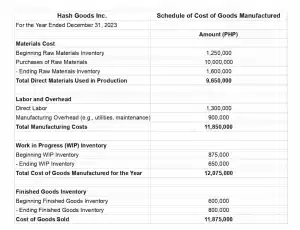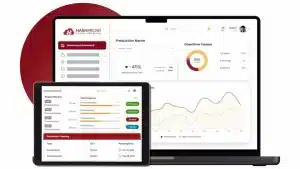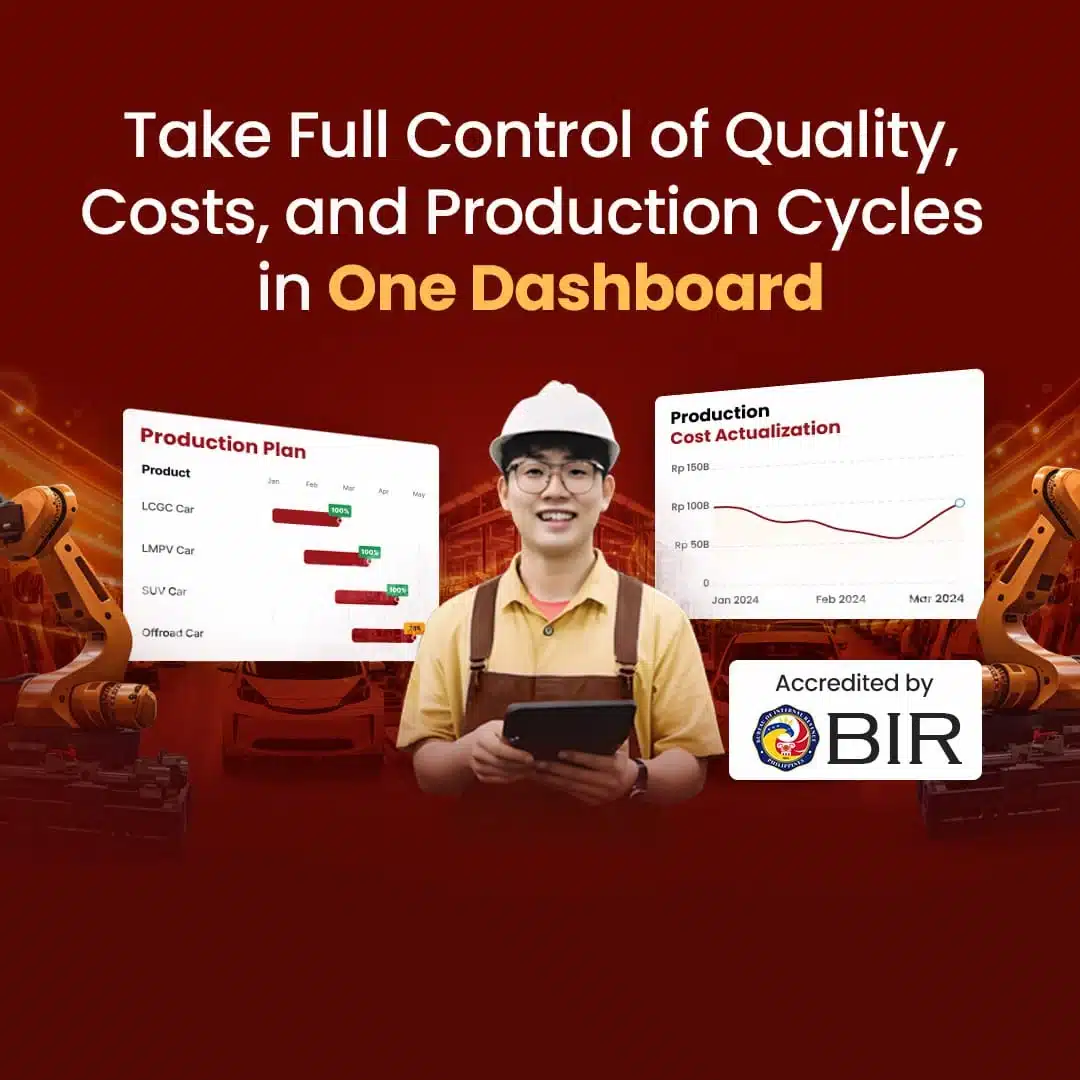Calculating the Cost of Goods Manufactured (COGM) goes beyond basic accounting for manufacturing managers; it’s a fundamental tool for keeping production processes efficient and cost-effective in a competitive industry. Accurate COGM data is crucial for tracking all production expenses, from raw materials to labor, helping managers effectively assess cost efficiency and resource allocation.
However, COGM calculations come with mabigat na hamon unique to manufacturing, such as precise inventory tracking, complex cost allocations, and variable manufacturing overheads. If hindi agad matutugunan, these issues can lead to inaccurate financial reports, impacting strategic direction and potentially affecting profitability.
The Deloitte report underscores the critical role of technological investment in advancing the Philippines’ manufacturing sector and integrating it into high-value global supply chains. Strengthening infrastructure and public-private partnerships will further support this growth and benefit related sectors like logistics and IT.
To address these COGM challenges, this article offers a comprehensive guide and introduces software solutions designed to simplify cost management. Let’s dive into practical tips and solutions to make COGM calculations smoother and more accurate.
Table of Contents

Key Takeaways
|
What is the Cost of Goods Manufactured (COGM)?
The Cost of Goods Manufactured (COGM) is the total cost a company spends to turn raw materials into finished products ready for sale within a specific period. This metric captures all production expenses, including direct labour, indirect labour, raw materials, and other overhead costs, providing a comprehensive view of manufacturing expenditures.
Understanding COGM is essential as it allows businesses to evaluate their production efficiency and align costs with their financial targets. By using the cost of goods manufactured formula, companies can assess their profit margins, pinpoint areas for cost control, and ensure their pricing strategies reflect actual production costs.
Moreover, COGM is a foundational element in calculating the cost of goods sold (COGS) formula for manufacturing, which is critical for determining profitability. For business owners and managers, knowing how to get the cost of goods manufactured is key to making informed decisions that drive financial success and sustainable growth.
How to Calculate Cost of Goods Manufactured (COGM)

Before calculating the Cost of Goods Manufactured (COGM), it’s essential to understand COGM’s role in managing production cost reports effectively. COGM gives businesses a clear view of the total expenses in creating goods ready for sale, directly impacting profit margins.
Here is a step-by-step guide to help companies accurately calculate COGM, empowering them to make well-informed business decisions with confidence.
1. Understand the COGM formula
Understanding the correct formula is essential to accurately calculating the cost of goods manufactured. The COGM formula is straightforward:
COGM = Beginning WIP inventory + Total Manufacturing Cost – Ending WIP inventory
This formula clearly shows the costs of production completion for a specific period. Mastering this calculation ensures reliable insights into your production expenses.
2. Choose a period for calculation
Selecting a specific period is crucial for an accurate COGM calculation, as this can vary widely by business type. For instance, companies dealing with fast-moving goods might calculate COGM daily or weekly, whereas durable goods manufacturers may calculate it quarterly or annually.
The frequency depends on inventory turnover and production cycles. Aligning the calculation period with business needs helps capture relevant cost fluctuations and insights.
3. Determine your beginning work in process inventory
The beginning WIP inventory represents the value of goods still in production at the start of the period. Companies calculate this by assessing the inventory that carried over from the previous period.
For instance, if 1,500 products were incomplete last month, this becomes the beginning WIP inventory for the new period. Including these in your COGM reflects the continued costs needed to complete these goods.
4. Calculate your total manufacturing cost
Calculating total manufacturing costs requires adding up direct materials, labor, and overhead expenses. Direct materials cover raw materials used in production, factoring in beginning inventory plus purchases minus ending inventory.
Labor costs involve salaries, commissions, and benefits tied to production hours, including any overtime. Manufacturing overhead includes indirect costs like factory rent and equipment maintenance, which are essential to capture in the cost of goods manufactured formula.
Cost of Goods Manufactured Formula

Before applying the cost of goods manufactured formula, it’s helpful to understand how to determine the ending work-in-progress (WIP) balance. The formula to calculate ending WIP is straightforward:
Ending WIP = Beginning WIP + Manufacturing Costs – Cost of Goods Manufactured, where beginning WIP is the closing balance from the prior period.
The following essential component in the COGM formula is calculating total manufacturing costs, including raw materials, direct labor, and overhead expenses. Adding these elements together gives you the total costs incurred to produce finished goods, capturing every expense tied directly to manufacturing.
Finally, to calculate the COGM, add the beginning WIP inventory to the total manufacturing costs, then subtract the ending WIP inventory balance. This formula gives a clear picture of production costs for a specific period, providing essential insights on how to get the cost of goods manufactured accurately for better financial planning and profit analysis.
After learning the COGM formula, you may now recognize the need for software to enhance the efficiency of your COGM calculations. You can explore the cost of manufacturing software, such as HashMicro’s solution, to support COGM and the cost of goods sold formula manufacturing by clicking the banner below.

COGM vs. Cost of Goods Sold (COGS)
Although they may seem similar, the cost of goods manufactured (COGM) and the cost of goods sold (COGS) are not the same. COGM represents the total costs assigned to products in production, covering both work-in-progress (WIP) and finished goods, whereas COGS is only recorded when products are sold.
For instance, a manufacturer might increase production in anticipation of a seasonal sales spike, leading to a high COGM. However, if none of these units are sold during that period, the COGS remains zero because no revenue is earned, following the accrual accounting principle.
The critical difference lies in timing—COGM helps track production costs, while the cost of goods sold formula manufacturing ties costs directly to revenue. Tools like a debit note can also play a role in adjusting production costs, ensuring that any corrections, such as returns or overcharges, are reflected accurately in COGM.
Understanding how to get the cost of goods manufactured is essential for managing production expenses, while COGS directly influences profit analysis.
Cost of Goods Manufactured Template
Before starting production, businesses must clearly understand the costs involved in manufacturing their products. By breaking down each cost component with a Cost of Goods Manufactured (COGM) template, companies gain a clearer picture of total production expenses and uncover opportunities for efficiency.
This template simplifies the calculation and analysis of costs, enabling businesses to make well-informed budget and operational decisions.

After reviewing the template above, you can customize each line item to match your business’s needs, but with the right ERP manufacturing software like HashMicro, calculating costs becomes even more accessible. Get a free demo today to see how HashMicro can streamline your production cost management and drive higher profitability for your company.
Cost of Goods Manufactured Example Calculation

To illustrate the cost of goods manufactured (COGM) calculation, let’s consider a manufacturer calculating its COGM for the fiscal year 2021. The beginning work-in-progress (WIP) inventory balance for this period is ₱40 million, while manufacturing costs, which include ₱20 million in raw materials, ₱20 million in direct labor, and ₱10 million in factory overhead, amount to ₱50 million.
Next, we add the beginning WIP inventory to the total manufacturing costs, reaching a subtotal of ₱90 million in production expenses. However, since the ending WIP inventory balance is ₱46 million, we deduct this from the subtotal to calculate the final COGM figure.
Using the cost of goods manufactured formula, we arrive at a COGM of ₱44 million for 2021, representing the total cost of converting raw materials into finished products ready for sale. Understanding how to calculate the cost of goods manufactured is essential for tracking production costs accurately and effectively applying the cost of goods sold in formula manufacturing.
Achieve Accurate COGM Insights with HashMicro’s Manufacturing Software

Why we recommend it: HashMicro’s manufacturing software for businesses looking to automate their operations in the Philippines. This software empowers companies to streamline processes and boost efficiency by automating complex tasks, from inventory management to production scheduling.
HashMicro Manufacturing Software is a top solution for addressing Cost of Goods Manufactured (COGM) calculation challenges. Its advanced features can simplify tracking and allocating production costs, ensuring accuracy in financial reporting and enabling better decision-making for your business.
If you’re interested in experiencing how HashMicro can transform your manufacturing operations, a free demo is available. This demo lets you explore the software’s capabilities firsthand and see its value in automating COGM calculations.
HashMicro Manufacturing Software provides a wide range of features designed to support various business needs, which enables comprehensive solutions for streamlined and integrated business growth. Below are the features:
- Manufacturing Cost Actualization: This feature continuously tracks real-time costs for materials, labor, and overhead, keeping COGM accurate and up-to-date. By monitoring costs as they occur, businesses can identify inefficiencies early, preventing budget overruns.
- BoM (Bill of Materials) Cost Forecast: It estimates the cost of components and processes for a multi-level Bill of Materials, allowing precise budget planning. This forecasting ensures companies can project production costs and adjust inventory to match financial goals.
- Material, Labor & Overhead Costs Management: This tool helps allocate production costs comprehensively, ensuring each COGM component is accurately assigned. By managing resource allocation, businesses can control expenses, thus maintaining profitability.
- Manufacturing Planning: This feature optimizes production schedules based on demand forecasts, aligning resources with COGM requirements. Efficient planning minimizes idle time and reduces waste, directly lowering production costs.
- Manufacturing Production Scheduling: This feature forecasts production needs using demand history, helping companies make cost-effective scheduling decisions. Managers can adjust output based on demand to keep COGM in check and meet market needs.
- Manufacturing Requisition Planning: It automates material requisitions based on production schedules, avoiding unnecessary stockpiling. This helps maintain a lean inventory, reduce holding costs, and support accurate COGM calculations.
- In-Depth Reporting: Detailed reports capture essential metrics like production costs, materials used, and time spent, which are vital for accurate COGM tracking. These insights empower managers to refine cost strategies and boost operational efficiency.
- Manufacturing Quality Control: This feature ensures product quality throughout production, minimizing costly reworks and waste that inflate COGM. By maintaining consistent quality, companies can control costs and deliver high-value products.
Beyond these core features, HashMicro offers extensive customization options to align software functions with your unique business needs. Additionally, it supports seamless integration with various third-party systems, enhancing operational connectivity and flexibility.
Conclusion
The Cost of Goods Manufactured (COGM) is a critical metric for companies seeking accurate insights into their production costs and profit margins. Implementing software solutions for COGM can greatly enhance accuracy and efficiency, allowing businesses to focus more on growth and less on complex manual calculations.
HashMicro’s manufacturing software is a leading solution for automating COGM calculations. It helps companies overcome inventory tracking, allocation, and production cost analysis challenges. By streamlining these processes, HashMicro enables managers to make faster, data-driven decisions directly impacting operational success.
Experience how HashMicro’s tailored solutions can streamline your COGM calculations—request a free demo today to discover the benefits for your business.

FAQ About Cost of Goods Manufactured
-
What is the function of COGM in business?
The cost of goods manufactured (COGM) is the total cost to produce finished goods during a specific period incurred by a company. It includes all direct and indirect costs associated with the manufacturing process, including raw materials, labour, factory overheads, and other production-related expenses.
-
What is the difference between COGM and COGS?
The cost of goods manufactured (COGM) is a figure that represents the total cost of producing your finished goods. This includes the cost of raw materials, labor, and overhead expenses. In contrast, the cost of goods sold (COGS) only includes the cost of raw materials and (in some cases) labor.
-
What is COGM in process costing?
The cost of goods manufactured (COGM) can be calculated by adding together the value of the beginning work in process (WIP) inventory and the total manufacturing cost (direct material and labor costs plus manufacturing overhead costs) for the accounting period, and deducting the value of the ending WIP inventory.



































